Blockbuster | 3 d printing ecological revetment again be born in suzhou, ruan jia bang brake reconstruction project
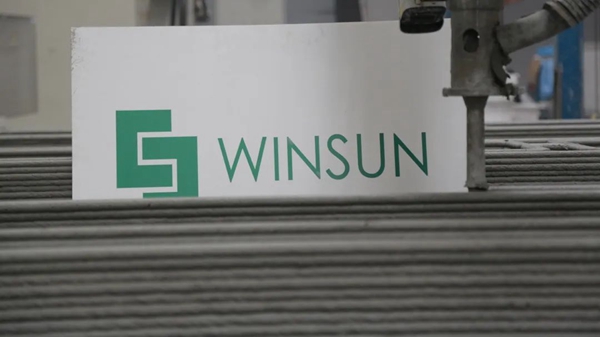
Ruanjiabang Sluice is located at the joint of Ruanjiabang and Caohu on the south bank of Caohu Lake, about 100 meters away from Ruanjiabang Bridge on Huanhu Road. The newly built gate adopts 4m horizontal rigid gate with a top elevation of 5.20m (Wusong).
The sluice is connected to the retaining wall, which is 281m in total, and adopts the assembled ecological retaining wall structure, which is assembled on site after 3D printing. At present, Yingchuang has started the 3D printing production stage of the project and is in full swing!
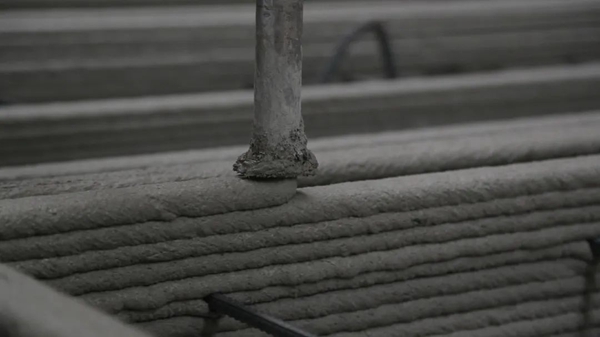
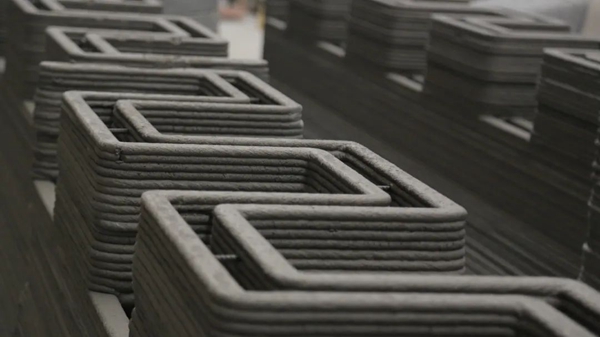
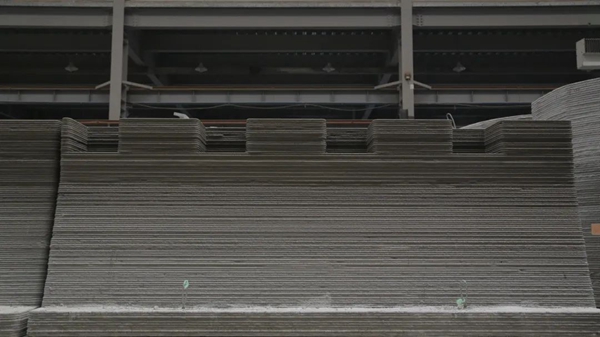
Advantages of 3D printing in waterway regulation engineering
In the traditional channel, the secondary bank protection is mainly the rigid structure of cast-in-place concrete, or the prefabricated flexible structure such as self-locking block, imitation wooden pile and box retaining wall. Although this kind of structure can satisfy the retaining function and has certain landscape effect, the overall effect is relatively poor and consumes more construction manpower. Compared with the traditional secondary bank protection structure form or construction technology, 3D printing secondary bank protection has the following four obvious advantages.
One is to use automatic production process to achieve automatic production of revetment structure in the workshop, improve the level of industrialization of revetment construction, effectively avoid the construction dust and noise.
Second, the site foundation construction and workshop structure printing synchronous implementation, can reduce the site construction module disassembly, concrete pouring, maintenance and other links, greatly save the cost of formwork, shorten the construction period, reduce the labor intensity of workers.
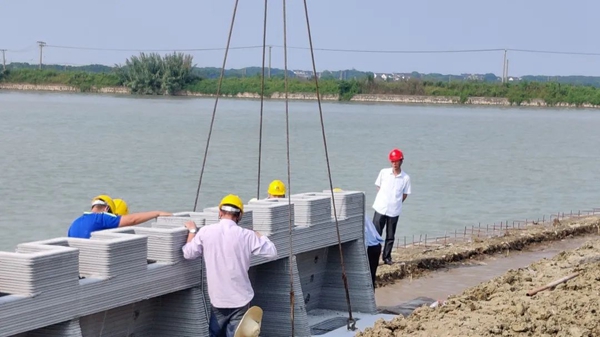
Third, the combination of computer 3D modeling technology breaks through the traditional design concept, can meet the needs of personalized landscape design, and achieve the landscape effect that can not be achieved by conventional technology.
Fourth, the raw materials used in the 3D printing secondary bank protection include industrial solid waste such as steel slag and construction waste, which enables the recycling of solid waste resources and realizes the environmental protection concept of additive manufacturing.
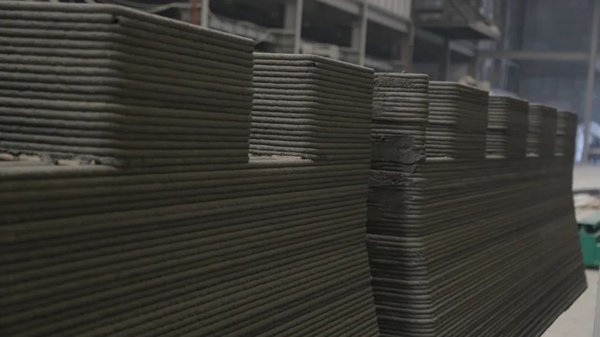
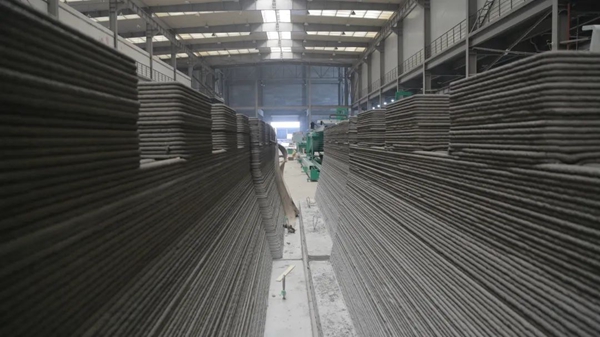
National first: 3D printing secondary revetment
In 2019, Winsun applied 3D printing technology to waterway regulation for the first time. In Wujiangtun Village section of Sushen-Shen Outer Port Line, a national high-grade waterway, Yingchuang built 432 meters of secondary bank protection through 3D printing technology, which became the first of its kind in China.
The 3D printing secondary bank revetment of the left bank of the waterway regulation Project of Sushen-Shen Outer Port Line is a breakthrough, demonstration and typical application of the 3D printing digital green building of Winsun in waterway management. The revetment adopts the method of subsection printing and section by section installation. Each section of revetment structure is 4 meters and weighs about 5 tons. Specially treated construction waste is used as one of the printing raw materials to realize the recycling of construction materials. Meanwhile, the construction 3D printing technology can reduce the difficulty of engineering construction and improve the construction efficiency. With good integrity and smooth linear line, the revetments can effectively protect the invasion from waves and currents. Planted with green plants, they will add luster to the new channel of "beautiful water, beautiful shore and beautiful environment".
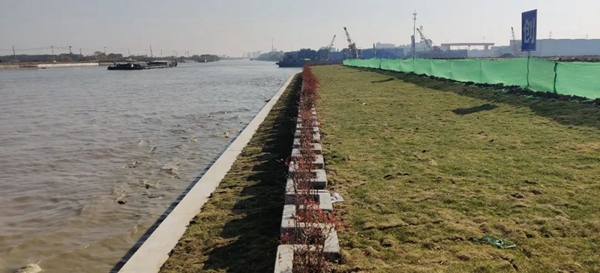
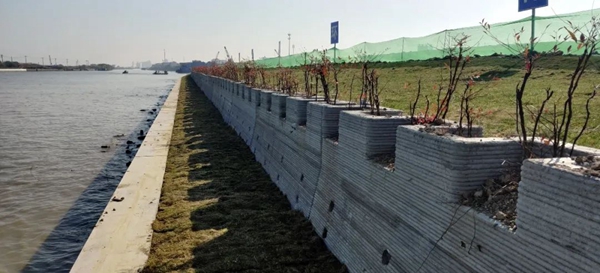
The application of architectural 3D printing digital technology in the field of waterway governance has promoted the formation of quality inspection standards for inland waterway 3D printing bank protection engineering. In 2021, Suzhou Port and Navigation Center led the establishment of a compilation group to put forward the quality inspection requirements of 3D printed bank protection components and sound barrier components for traffic engineering based on the waterway renovation project of Suzhou Outer Port Line (Jiangsu Section) and the sound barrier project of Suzhou Ring Expressway, and carried out standard research accordingly. During the period, Suzhou Port and Navigation Center, Water Transport Index, Ring City Company, Huashe Design Group and Winsun Construction Technology Company cooperated with each other to carry out field research and organize experts to establish project demonstration, so as to ensure that the formulation of standards is not only legal but also demonstrated by examples. In December 2021, the Quality Inspection Standard of 3D Printing revetment Engineering and sound Barrier Engineering of Traffic Engineering passed the technical review of Jiangsu Provincial Society of Comprehensive Transportation. In January 2022, Jiangsu Provincial Society of Integrated Transportation officially released the standard, which was officially implemented in March.
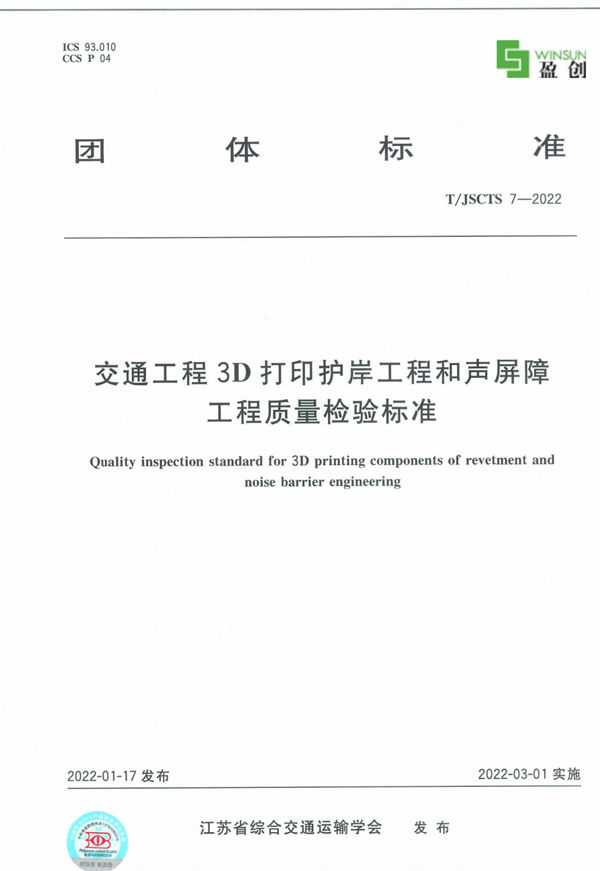
The 3D printing ecological revetment once again landed in Suzhou, which is of great significance!
The use of 3D printing on the connecting retaining wall of the sluice of Ruanjiabang sluice reconstruction project means not only another attempt of building 3D printing technology in the field of hydraulic engineering facilities and waterway regulation, but also means that more data will be formed through practical application, proving the feasibility of the extensive application of building 3D printing technology in hydraulic engineering!





